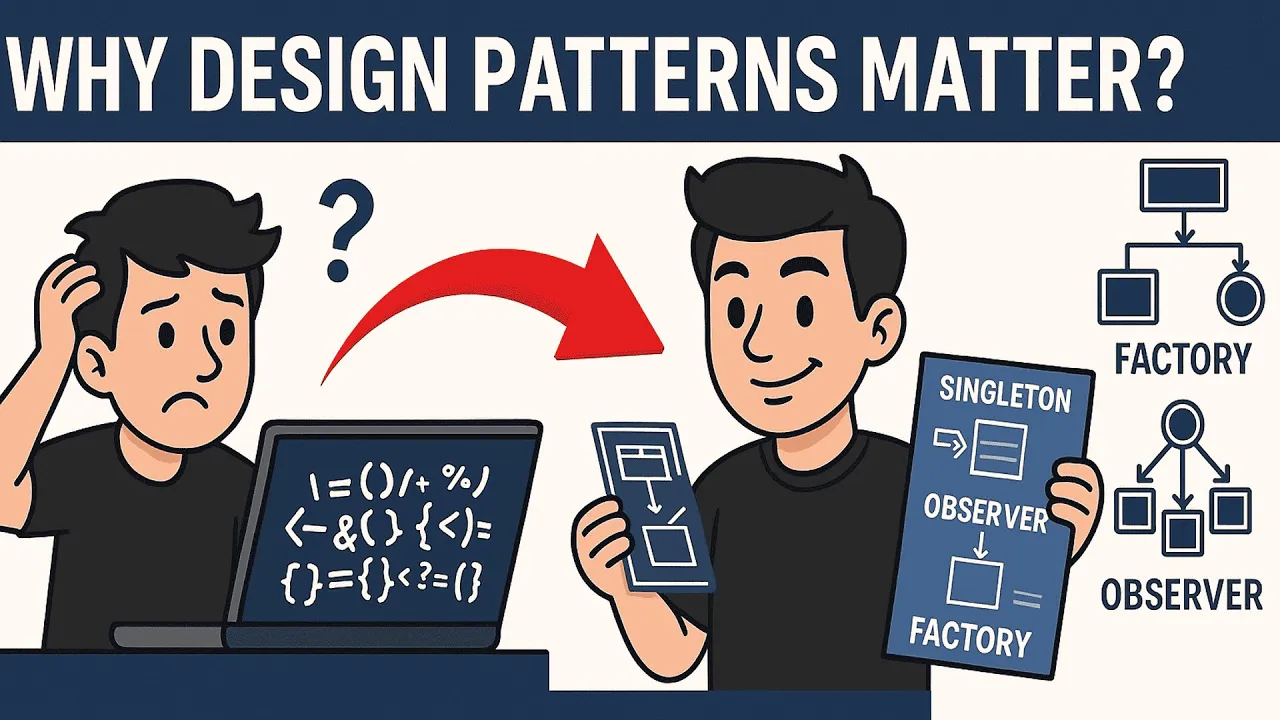💡 What Are Design Patterns?
Design patterns are standard, reusable solutions to common problems in software design.
A group of four authors — known as the Gang of Four (GoF) — documented 23 patterns in their famous book:
Design Patterns: Elements of Reusable Object-Oriented Software.
✅ Benefits of Using Design Patterns
- 📦 Write modular, clean, and maintainable code
- 🔁 Promote code reuse and flexibility
- 🧱 Follow industry-standard practices
- 🧠 Improve communication with developers (patterns = common language)
- 🧪 Make code easier to test and refactor
- 💼 Frequently asked in job interviews
📚 What You’ll Learn in This Series
We will explore 3 main categories of Design Patterns:
1. Creational Patterns
These deal with object creation mechanisms, trying to create objects in a manner suitable to the situation.
- Singleton
- Factory Method
- Abstract Factory
- Builder
- Prototype
2. Structural Patterns
These deal with object composition — how classes and objects are composed to form larger structures.
- Adapter
- Bridge
- Composite
- Decorator
- Facade
- Flyweight
- Proxy
3. Behavioral Patterns
These focus on communication between objects.
- Strategy
- Observer
- Command
- Iterator
- Mediator
- Memento
- State
- Template Method
- Visitor
- Chain of Responsibility
🔍 Pre-Requisite: SOLID Principles
- S – Single Responsibility
- O – Open/Closed
- L – Liskov Substitution
- I – Interface Segregation
- D – Dependency Inversion
